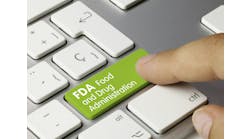It is a familiar site up and down the corridors of long-term care: a paper medication administration record (MAR) the size of the New York City yellow pages sits atop a medication cart as nurses transcribe individual dosage instructions from hand written records. It is an inefficient process with no decisive workflow that places needless stress on nursing staff. As a result, illegible entries can result in medication administration mistakes.
Medication administration errors are a growing concern for long-term care providers. Beyond the potential illness, hospitalization or death of residents, medication administration errors place long-term care facilities at risk of litigation while driving up the cost of healthcare. Why? Because paper-based MARs are not inherently designed to reduce medication errors and have remained unchanged for decades.
What happens if a nurse cannot read a note left by a colleague or doctor? What if instructions to discontinue a medication or alter its dosage are not accurately recorded? Does that straw inserted into the MAR during an interrupted med pass ensure it will be resumed accurately? When it is state survey time, are administrators and directors of nursing confident their MARs will pass the scrutiny of the surveyor?
Pharmacies and long-term care providers must reconcile their paper-based MARs at the end of the month to match the drugs that were added or changed since the print date. Incomplete entries or chart "holes" make it difficult to audit medication administration and provide effective quality control. At survey time, these holes can result in fines of roughly $2,500 per incident, according to industry estimates.
Out of control
The lack of controls and tools to make the med pass process easier and more efficient contribute heavily to adverse drug events (ADEs) in long-term care. In fact, a study published in The American Journal of Medicine [Gurwitz, Jerry H., M.D. et al 118 (3), p.251-258, March 2005] concluded that with 1.6 million long-term care residents in the United States there are 1.9 million adverse drug events (ADE) per year. More specifically, a 2006 study on the prevention of medication errors by the Institute of Medicine found:
- Excluding wrong-time errors, omission of an ordered medication is generally the most common type of drug administration error in nursing homes.
- Preventable adverse drug events run at a rate of 50 preventable ADEs per 100 bed nursing home.
- The most common medication administration errors are administering an unauthorized drug (44.8 percent), omitting a prescribed drug (41.5 percent), administering the wrong dose (11 percent), administering via the wrong route (2 percent) and administering the wrong form (.4 percent).
These common errors are a far cry from ensuring long-term care facilities meets the five rights of drug administration: right resident, right drug, right dose, right route of administration and the right time.
A better way
Today, cutting edge long-term care communities are turning to technology to improve medication pass efficiency and resident safety with new electronic medication administration record systems more commonly known as eMAR. eMAR systems, currently standard practice in many acute care settings, are workflow management systems that automate the inefficient and error-prone paper-based MAR process.
As long-term care is in the nascent stages of adopting eMAR, no two definitions are the same and not all eMAR systems are created equal. So what should administrators and decision makers look for when selecting an eMAR solution?
An eMAR built for acute care does not deliver the same benefit as an eMAR specifically designed for long-term care. The best eMAR solutions are built around real long-term care workflows and provide a process guided by software to complete a successful med pass.
Likely the most important consideration is that the eMAR solution must be easy to use and have a clear, crisp user interface. Nursing staff must be able to intuitively use the program — with floor nurse training taking no more than a few minutes before the user can effectively and properly use the system. If the system is too complicated to use, directors of nursing or nurse managers will have difficulty enforcing compliance and ensuring the system is being used properly ... or at all.
On the back end, the eMAR must be cost-effective and robust. Consider all aspects of any application you review. For example, does the solution require complicated databases to support, software to update, servers to maintain or data to be synchronized? If it is Web-based, what happens if the Internet connection goes down? These are only a few of the many considerations. Be sure to fully consult with your eMAR marketer to get all the answers.
The bottom line benefits of eMAR
When properly deployed, eMAR can help long-term care facilities achieve improvements in a number of areas such as:
- Increased med pass efficiency — Making it easier for nursing staff to complete med passes faster and more efficiently means they have more time to provide patient care and interact with family members and care givers.
- Reduced ADEs — Improving communication and interaction between the staff and the pharmacy eliminates opportunities for medication errors.
- Improved resident safety — Reducing ADEs means a higher level of resident care, reduced potential for hospitalization and family complaints, and potentially lower insurance premiums.
- Enhanced survey readiness — Providing better documentation and a directed med pass reduces exposure to citations and fines. The ability to quickly and easily retrieve documentation at the resident level means reduced liability and exposure through better documentation.
- Better quality assurance — Ensuring directors of nursing can monitor med pass compliance in real time means they can evaluate pharmacy care and regimen anywhere, anytime.
- Provide a better nursing environment — Eliminating the stress and headaches associated with med passes has a positive impact on staff morale.
- Improve facility marketability — Using eMAR as a census-building marketing tool helps long term care facilities differentiate themselves from the competition. Use of eMAR helps facilities promote the claim that technology is being used to help prevent medication errors.
The bottom line: a successful eMAR deployment can help facilities redirect or save approximately $41,000 in annual labor costs that are currently wasted using paper-based MARs. In addition, more than 1,500 nursing hours can be redirected to resident care each year (see accompanying chart). These are only a few of the many reasons why eMAR will prove to be a dramatic improvement over the massive paper MAR notebooks rolling down long-term care corridors today.
Michael Russo is CTO, software products group, at Artromick, a developer of medication management and healthcare technology solutions for the long-term and acute care markets.



